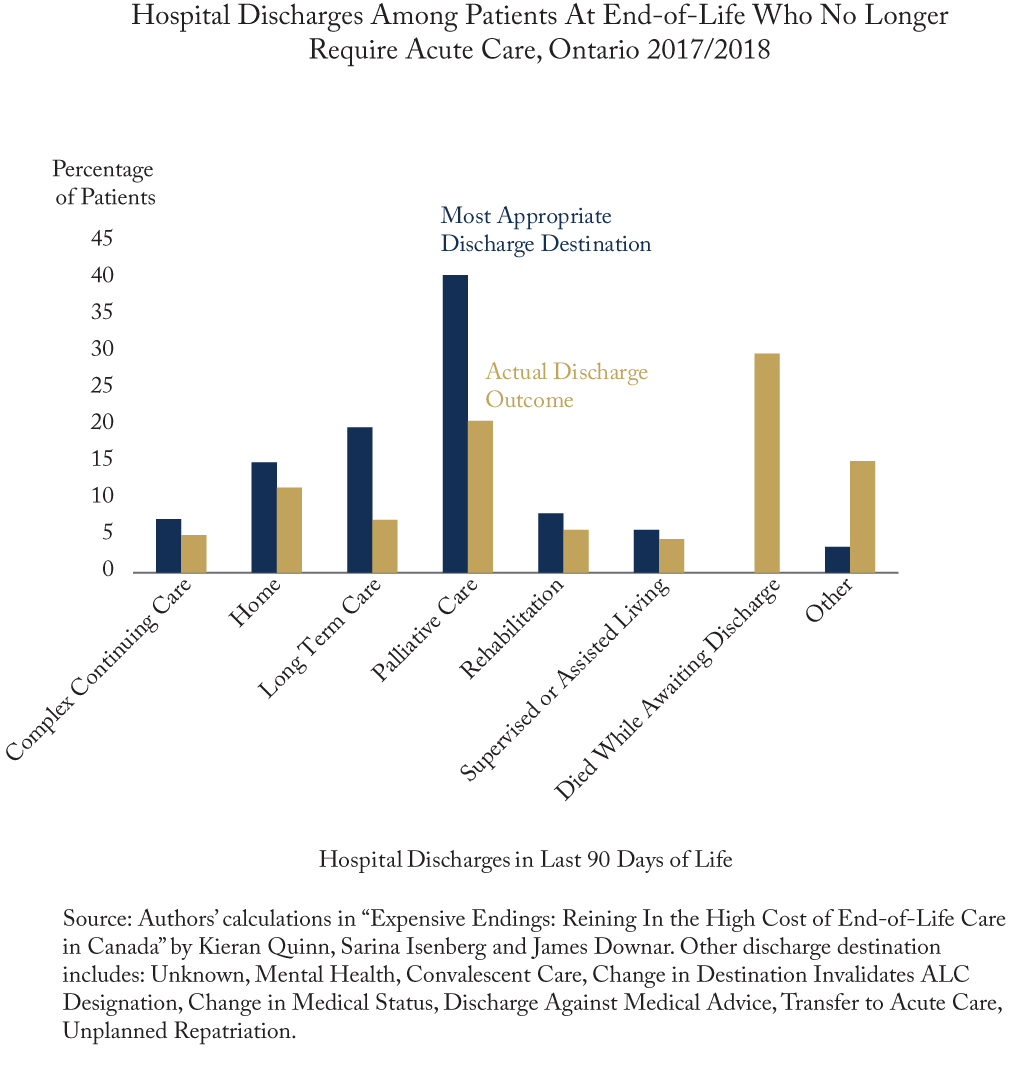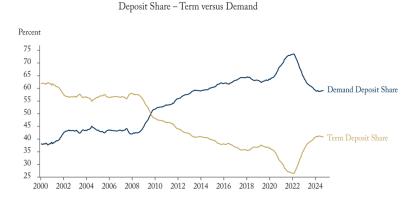People approaching the end of life often require an intensification of healthcare services, and the majority could benefit from palliative care prior to death. With its focus on improving comfort and quality of life, palliative care tends to avoid hospital-based, invasive, costly and potentially inappropriate care. Palliative care is preferably (but not always) delivered outside of acute-care settings, including in patients’ homes.
In 2017/18, 41 percent of Ontarians waiting to leave acute-care settings at the end of their life were recommended to be discharged to either residential or hospital palliative care settings, yet only one in five was ultimately discharged to a palliative care setting. And worse yet, 30 percent of all those waiting to leave acute-care settings at the end of life died before they were discharged. Similar patterns emerge nation-wide, meaning Canadian seniors often die in a place they don’t want to be, getting aggressive care that is inconsistent with their goals.
Not only is this mismatch unpleasant and inappropriate, it is also expensive and inefficient; palliative care tends to be significantly less expensive than acute care. If our goals are to reduce suffering and improve quality while limiting costs, Canadians are not getting value for their money.
Canadian seniors deserve better, and we can’t afford to ignore this any longer.
To learn more about our senior care recommendations, please read “Expensive Endings: Reining In the High Cost of End-of-Life Care in Canada” by Kieran Quinn, Sarina Isenberg and James Downar.





